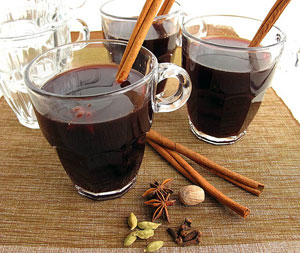 Warm yourself from head to toe with a hot drink on a blustery day like today. Mulled wine does that and more. Popularized in Germany and Scandinavia, mulled wine has been a holiday favorite for hundreds of years. Christmas markets in cities and towns all over Europe swell with shoppers who turn to mulled wine when they want to warm up their chilly fingers and toes. It really does have the effect of rosying cheeks and making spirits bright. Mulled wine is typically made with a good dry wine sweetened with sugar and flavored with various spices, including cinnamon, cloves, and nutmeg, among others.
Warm yourself from head to toe with a hot drink on a blustery day like today. Mulled wine does that and more. Popularized in Germany and Scandinavia, mulled wine has been a holiday favorite for hundreds of years. Christmas markets in cities and towns all over Europe swell with shoppers who turn to mulled wine when they want to warm up their chilly fingers and toes. It really does have the effect of rosying cheeks and making spirits bright. Mulled wine is typically made with a good dry wine sweetened with sugar and flavored with various spices, including cinnamon, cloves, and nutmeg, among others.
In old fashioned times, wine was mulled to take away its foul or spoiled taste. The tradition was born out of practicality. But that is no longer the case. Use good but inexpensive wine for this drink. There's no reason to set the bank back when the flavor will come mostly from the spices you add. My version is based on a drink my father enjoyed. He used to love adding red wine to a cup of tea. It was his drink for when he needed to warm up after coming in from the cold outdoors, especially after we explored the wilderness together.
Food, Wine, Good (and Evil) Spirits
Food, Wine, Good (and Evil) Spirits
The Best Fresh Lime Margarita
The real secret to a great Margarita is choosing the best tequila, so save these for special occasions with just a few friends. Start this recipe the day before your party – it’s worth it. The longer the zest and juice mixture is allowed to steep, the more developed the citrus flavors in the finished margaritas - the full 24 hours is best, although the margaritas will still be great if the mixture is steeped only for the minimum 4 hours.
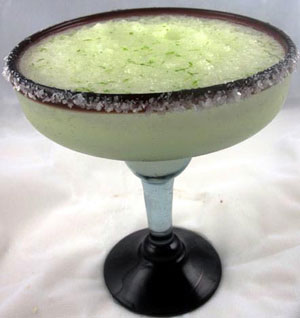 Classic Fresh Lime Margarita
Classic Fresh Lime Margarita
4 teaspoons grated lime zest
1/2 cup lime juice from 2 to 3 medium limes
4 teaspoons grated lemon zest
1/2 cup lemon juice from 2 to 3 medium lemons
1/4 cup superfine sugar
pinch table salt
2 cups crushed ice
1 cup 100 percent agave tequila , such as Don Julio Reposado Tequila
1/4 cup Grand Marnier
1/4 cup Triple Sec
Combine lime zest and juice, lemon zest and juice, sugar, and salt in large liquid measuring cup; cover with plastic wrap and refrigerate until flavors meld, 24 hours.
Divide 1 cup crushed ice between 4 or 6 margarita or double old-fashioned glasses. Strain juice mixture into 1-quart pitcher or cocktail shaker. Add tequila, Grand Marnier, and Triple Sec, and remaining crushed ice; stir or shake until thoroughly combined and chilled, 20 to 60 seconds. Strain into ice-filled glasses; serve immediately.
– Recipe courtesy of Cook Like James
It's (Gree) Not (Grisss)
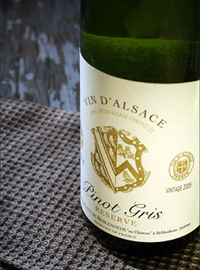 I had to laugh the other night while having dinner in a local restaurant. The patrons next to us ordered a bottle of wine, confidently requesting "Pinot Grisss", with lots of heavy emphasis on the "isssss", as their wine of choice for the evening.
I had to laugh the other night while having dinner in a local restaurant. The patrons next to us ordered a bottle of wine, confidently requesting "Pinot Grisss", with lots of heavy emphasis on the "isssss", as their wine of choice for the evening.
I shouldn't have laughed. Really I shouldn't have. But I'm horrible like that. Don't worry... they didn't hear me. I wanted the waitress to correct them though, "You mean PEE-noh Gree?" but she didn't. Maybe she was worried about her tip or was trying hard not to laugh herself.
I think the intimidation for ordering wine is even greater at fine dining establishments employing a sommelier (sum-muhl-YAY). The sommelier is there to help guide restaurant guests in the best wine choice possible in terms of their meal, palate and pocketbook. It can be intimidating to speak up and request something from somewhere like Chateauneauf-du-Pape (shah-toh-nuhf-doo-PAHP), if you have absolutely NO IDEA how to pronounce the words.
I should be more forgiving. I know for a fact, as many have confessed to me, some people shy away from ordering particular wines simply because they are afraid of making a pronunciation mistake in front of friends and clients.
Clay vs. The Drought
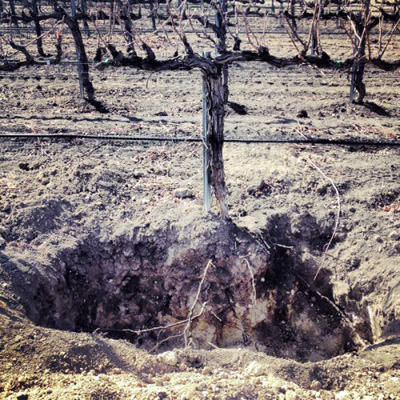 My father's singular obsession with noble limestone permeates every discussion of our wines. He purchased our vineyard land only once he discovered it lies on a 300 foot deep slab of the white, porous rock. Because we are so proud of Limestone’s mineral, high acid effect on the wines, we seldom discuss the thin layer of dirt above.
My father's singular obsession with noble limestone permeates every discussion of our wines. He purchased our vineyard land only once he discovered it lies on a 300 foot deep slab of the white, porous rock. Because we are so proud of Limestone’s mineral, high acid effect on the wines, we seldom discuss the thin layer of dirt above.
The Stolpman estate vineyard's clay topsoil is light gray when dry and becomes a sticky mud when wet. Many 2×4 cars have fallen victim to the wet clay, even on our hard-packed roads. Boots become several pounds heavier with mud stuck like bricks in the treads.
That’s the very beauty of clay in our perpetual California drought: it retains moisture. This year, as we look at the driest winter thus far in our vineyard’s history; we are thankful to have clay. As we drip water on the ground through our irrigation hoses, we mimic normal rainfall, allowing the clay to become saturated. Like a year of normal rain fall, when we hope to get 12 inches, we won’t irrigate after set. Set describes the transition when the vines’ tiny flowers become “.” sized grapes.
By cutting water at set, we are ensuring that the plant will still have to fight through the summer to ripen tiny concentrated grapes, undiluted by irrigation. In a drought year like 2014, this is our new definition of dry farming.
Genie In A Bottle? Her Name Is Colatura.
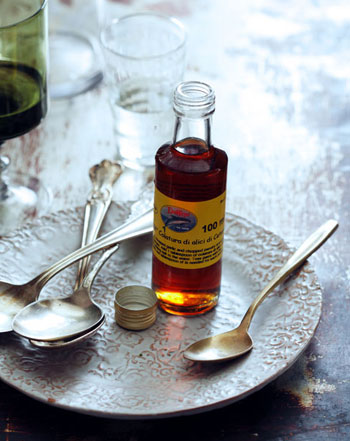 When you live, breathe, eat and sleep food, it can sometimes be hard to muster excitement. This doesn’t mean I’ve grown weary of food and all it involves, it just means that it takes a little extra or a tiny bit of sumthin’ sumthin’ to really knock my socks off. Not that they need constant knocking off. They don’t. I’m happy with plain most of the time.
When you live, breathe, eat and sleep food, it can sometimes be hard to muster excitement. This doesn’t mean I’ve grown weary of food and all it involves, it just means that it takes a little extra or a tiny bit of sumthin’ sumthin’ to really knock my socks off. Not that they need constant knocking off. They don’t. I’m happy with plain most of the time.
The pleasures of food and discovery happen when you least expect it. I can remember a moment 20 years ago when I had my first Meyer lemon and I thought the earth would swallow itself. My mind was expanding with each taste of that glorious citrus and I knew life would never be the same. The same can be said of having Jamon Iberico de bellota, a proper supplì, even Wisconsin cheese curds for the very first time. I can count those moments on one hand.
Last month in Italy I had another one of those moments at dinner. It was a fish dish with a very simple aioli––or so I thought. It turns out that the aioli was made with Colatura, an extremely flavorful Italian condiment made from fish and salt. My eyes must have given my excitement away as our dinner neighbor Fabio looked at me and said “It’s Colatura. There’s Colatura in here.” He explained how it’s made, telling me fish sauce has been used for thousands of years in Italy.
More Articles ...
Welcome to the new One for the Table ...
Our Home Page will be different each time you arrive.
We're sure you'll find something to pique your interest...
